UNESCO World Heritage Sites in Spain are living links to centuries of culture, art, and nature. Spain ranks among the countries with the most UNESCO sites—over 40 and counting—from grand cathedrals to lush wild spaces. Every site tells a story. Each monument, city, and park holds memories of kingdoms, pilgrims, artists, and visionaries who shaped the nation. Whether you love exploring medieval alleys, marveling at unique architecture, feasting on history and tapas, or trekking through ancient forests, Spain’s heritage calls out to be experienced.
Exploring the rich tapestry of Spain’s UNESCO sites isn’t just for scholars or history buffs. Families, solo travelers, and photographers all find inspiration. From bustling Madrid to the volcanic peaks of the Canary Islands, these places stir deep wonder. Let’s travel through Spain’s most treasured sites, see what makes them so special, and discover how you can make them part of your next adventure.
Contents
- 1 What Makes a Site UNESCO World Heritage-Worthy?
- 2 The Alhambra and Generalife, Granada: Moorish Majesty
- 3 Antoni Gaudí’s Works in Barcelona: Where Art Becomes Architecture
- 4 Historic City of Toledo: The Essence of Medieval Spain
- 5 Santiago de Compostela (Old Town): Pilgrimage and Spiritual Wonder
- 6 The Prado and Paseo del Arte, Madrid: Art Lover’s Paradise
- 7 Historic Centre of Cordoba: World of the Caliphs
- 8 Roman Theatre of Mérida: Where the Empire Lives On
- 9 Garajonay National Park, La Gomera: Enchanted Forests of the Canaries
- 10 Ávila’s Old Town and City Walls: Timeless Fortress
- 11 Palau de la Música Catalana and Hospital de Sant Pau, Barcelona: Modernisme Magic
- 12 Doñana National Park: Wild Heart of Andalucía
- 13 Burgos Cathedral: The Gothic Gem
- 13.1 A Tapestry of Art, History, and Religion
- 13.2 El Cid and Legendary Tales
- 13.3 Off the Beaten Path: Lesser-Known World Heritage Sites
- 13.4 Planning Your Own Heritage Adventure in Spain
- 13.5 Spanish UNESCO Sites and Film: Famous Locations on the Big Screen
- 13.6 Future Contenders: Spain’s Aspiring World Heritage Nominations
- 13.7 Conclusion: Why Spain’s World Heritage Sites Should Be on Your Bucket List
What Makes a Site UNESCO World Heritage-Worthy?
UNESCO doesn’t give out its designation lightly. Each World Heritage Site must meet strict guidelines, whether they are cultural, natural, or a mix of both. Spain’s unique UNESCO World Heritage Sites stand out as cultural and natural treasures. A place earns this title by showcasing ‘outstanding universal value,’ reflecting its culture, history, and nature. Culture-rich sites reveal Spanish art, faith, and social growth over time.
The Criteria for Cultural and Natural Significance
A site often needs to show “outstanding universal value.” That means it matters to all people, not just those nearby. Factors include historical importance, unique design, or rare natural beauty. For example, places like the Sagrada Familia in Barcelona shine for unique artistry, while Doñana National Park is known for wildlife and rare landscapes.
The selection looks at:
- Architectural innovation
- Historic events or traditions
- Biodiversity or rare habitats
- Social or scientific impact
- Exceptional preservation
Spain abounds with places that tick these boxes—blending Moorish design, Roman remains, medieval wonder, and pristine wildlands.
Spain’s Historical Importance on the World Stage
Spain has connected different cultures for centuries, with many monuments like the Alhambra and the mosque-cathedral of Córdoba showcasing their historical significance as a world heritage site. Romans, Visigoths, Moors, and Christian kingdoms built, traded, and fought across these lands, reflecting art and architecture from East and West. These important sites have played key roles in science, faith, literature, and trade, making them vital to global history.
The Alhambra and Generalife, Granada: Moorish Majesty
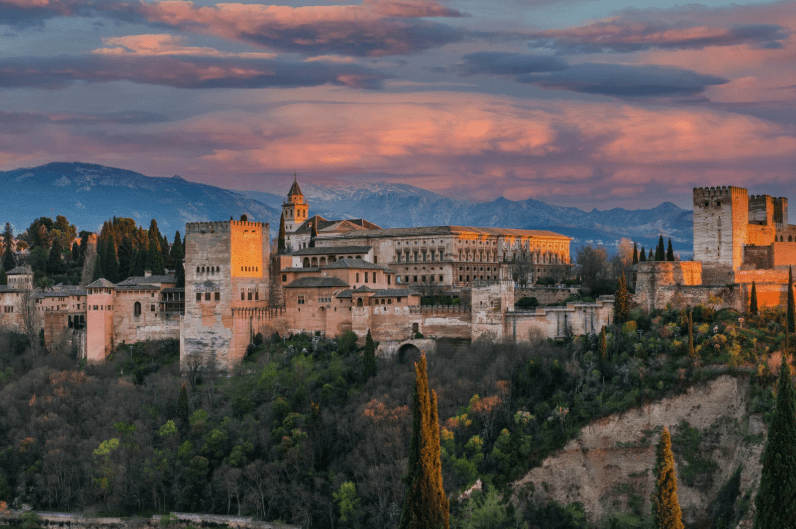
Perhaps no Spanish landmark draws more awe than the Alhambra, a unique UNESCO World Heritage site. Overlooking Granada, it gleams with Islamic artistry and engineering brilliance. The Generalife gardens—once the sultan’s private escape—add a dreamlike touch that enhances its status as a popular tourist attraction.
The Spellbinding Palaces of the Nasrid Dynasty
The Nasrid Dynasty, the last Muslim rulers in Spain, constructed the Alhambra in the 13th and 14th centuries, showcasing breathtaking architecture with carved stucco, arabesque tiles, and classic arches in every corner. Don’t miss the Court of the Lions, a masterpiece of Islamic design and geometry, making this an important monument that set standards in art and culture across Europe and North Africa.
Gardens That Whisper Stories of the Past
Next to the palaces, the Generalife gardens unfold with terraces, water channels, and flowers, showcasing the breathtaking architecture of Moorish ruins. Traditional “acequia” irrigation channels glimmer in the sun, while cypresses, roses, and fountains create a peaceful scene that lingers in memory, highlighting this unique UNESCO World Heritage site.
For a deeper look at Alhambra, guided tours are available through GetYourGuide
Antoni Gaudí’s Works in Barcelona: Where Art Becomes Architecture
Barcelona dazzles with buildings that twist, curve, and defy the rules. At the heart of this Spanish city is Antoni Gaudí—the genius whose creations shaped the city’s look. UNESCO World Heritage Site listings include seven of his works, recognized for their creativity and bold forms.
La Sagrada Familia: A Vision Still Rising
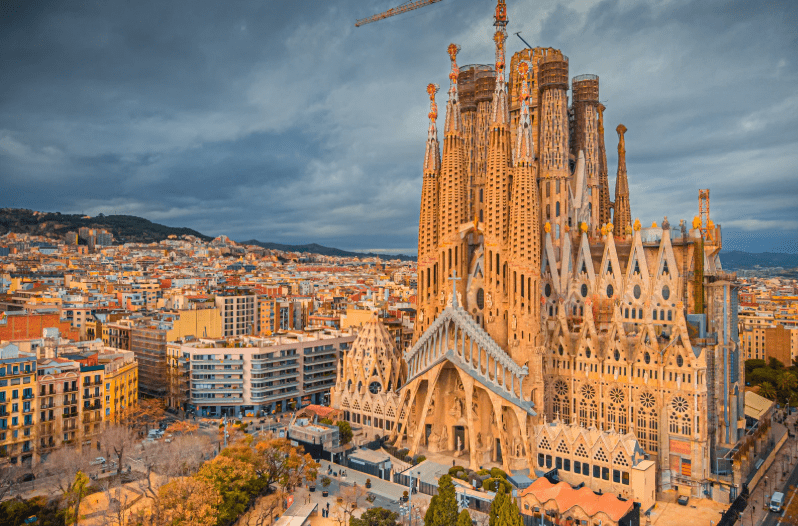
The Sagrada Familia, a unique UNESCO World Heritage site, soars over Barcelona, its spires stretching toward the sky. Gaudí took on this bold Romanesque church in 1883. It’s still unfinished, with cranes and scaffolding a common sight. The design mixes Gothic and Art Nouveau forms, covered in elaborate sculptures of nature and faith. Every window lets colorful light spill inside, bathing the space in a soft glow. This basilica draws millions each year, eager to witness a living masterpiece.
Park Güell and Casa Batlló: Fantastical Urban Design
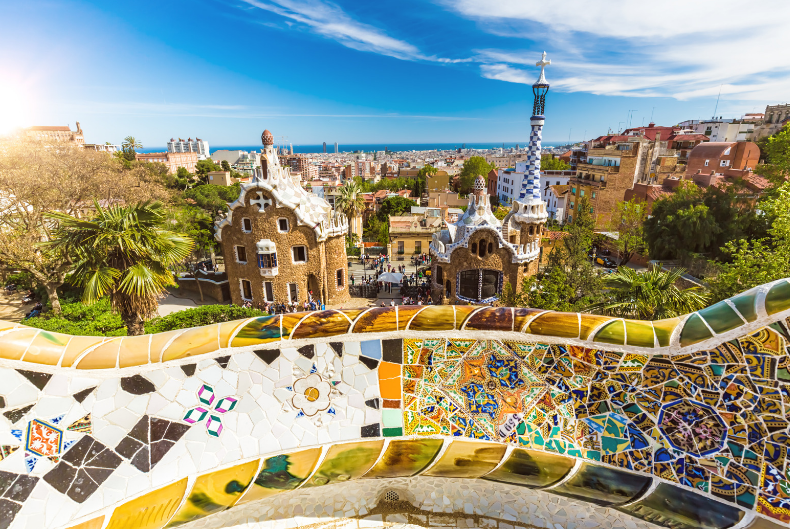
Step into Park Güell, a unique UNESCO World Heritage site, and it feels like a fairy tale. Mosaic lizards, swirling benches, and gingerbread-like houses light up the hillside. Gaudí used bright tiles and flowing lines, inspired by the natural world. Casa Batlló, just down the Passeig de Gràcia, dazzles with its dragon-like roof and playful shapes. Both sites have set new trends in urban design and inspire architects worldwide.
For a deeper look at Barcelona, guided tours are available through GetYourGuide
Historic City of Toledo: The Essence of Medieval Spain
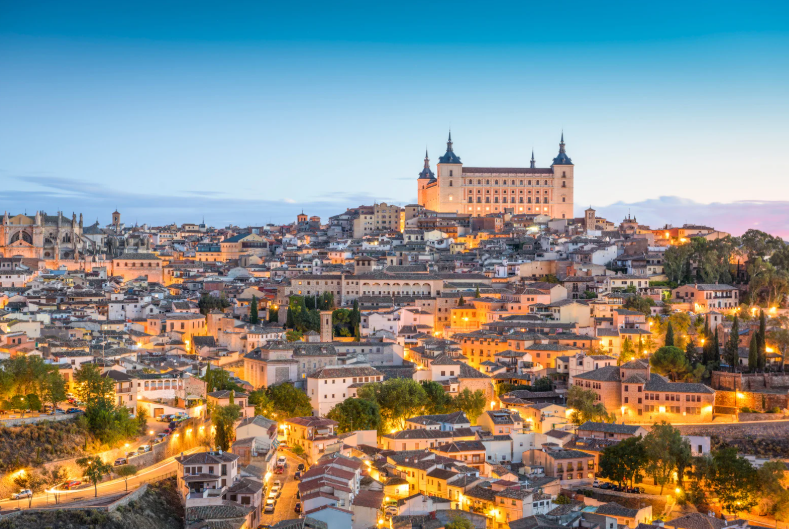
High on a hill above the Tagus River, Toledo looks unchanged since the Middle Ages. Called the “City of Three Cultures,” it’s a patchwork of Christian, Islamic, and Jewish history.
The “City of Three Cultures” Unveiled
Toledo showcases how various cultures coexisted harmoniously, with mosques, synagogues, and important monuments like the Catholic church standing side by side. This unique UNESCO World Heritage site became a hub for translation, merging Arabic science with Latin thought, which led to significant advancements in knowledge and art, reflecting its rich living heritage.
Ancient Landmarks: Cathedral, Alcázar, and Synagogue
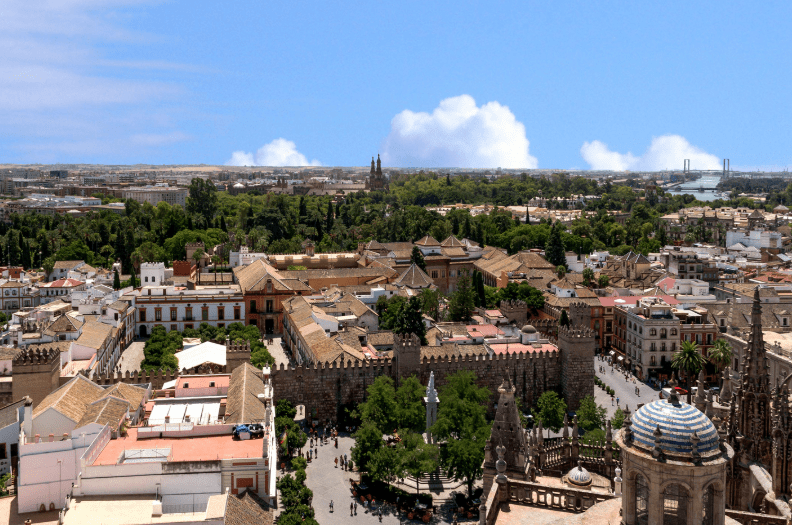
Crowning the skyline is Toledo Cathedral—an icon of Spanish Gothic style and an important monument filled with art from El Greco. The nearby Alcázar fortress now houses the Army Museum, while the Santa María la Blanca synagogue stands as a unique UNESCO World Heritage site, representing a rare trace of medieval Jewry. These buildings each tell a chapter of Toledo’s complex story.
For a deeper look at Toledo, guided tours are available through GetYourGuide
Santiago de Compostela (Old Town): Pilgrimage and Spiritual Wonder
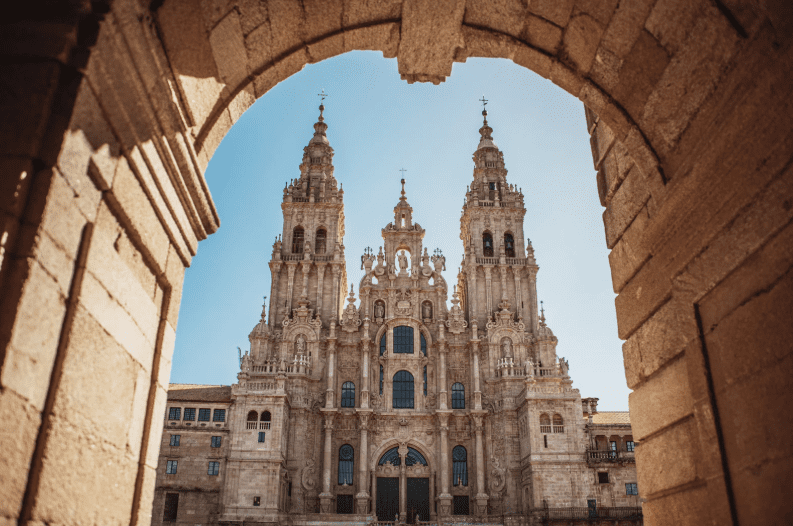
Santiago de Compostela has drawn travelers for more than a thousand years. It’s the final stop of the Camino de Santiago—the St. James’ Way.
The Legendary Camino de Santiago
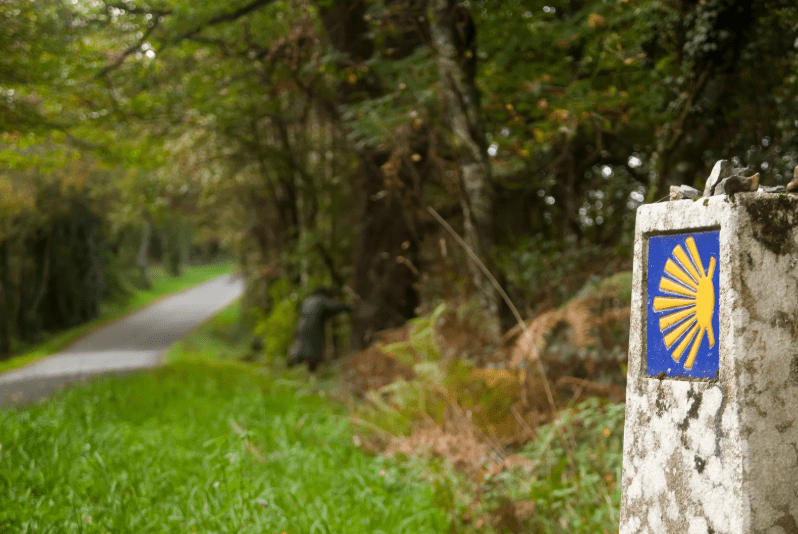
The Camino isn’t just a walk; it’s a tradition that leads to one of Spain’s important monuments, the ornate cathedral in Santiago. Pilgrims walk or bike hundreds of miles for reflection, fellowship, or faith, passing through various cultures and historical sites, with the journey fostering a unique connection to the heritage of the region.
The Grand Cathedral: A Pilgrim’s Destination
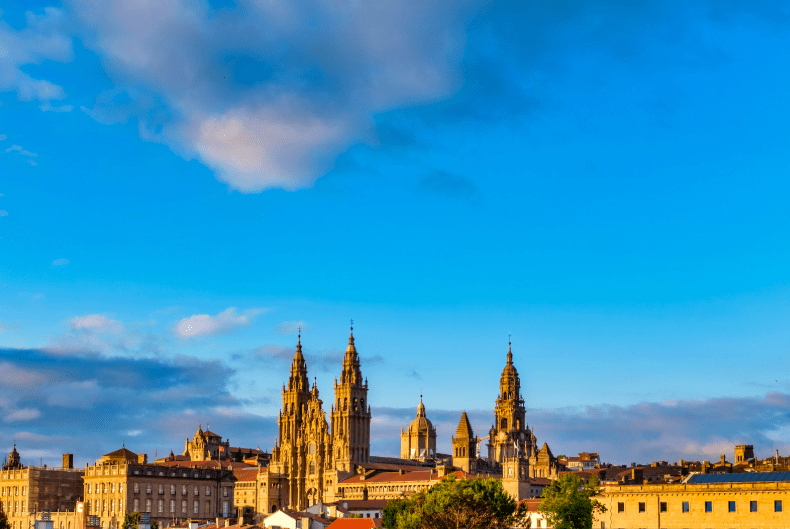
Every year, the cathedral, an important monument, hosts crowds who come to touch the tomb of St. James the Apostle. Its breathtaking architecture soars with baroque details, while the botafumeiro incense burner swings above during the fiesta de los patios, creating an atmosphere filled with excitement, music, and stories shared by people from every country.
For a deeper look at Santiago de Compostela, guided tours are available through GetYourGuide.
The Prado and Paseo del Arte, Madrid: Art Lover’s Paradise
Madrid’s Paseo del Arte is a dream for fans of art history. Along this broad avenue, you’ll find treasures from Velázquez, Picasso, Goya, and more.
Prado Museum: Masterpieces from Velázquez and Goya
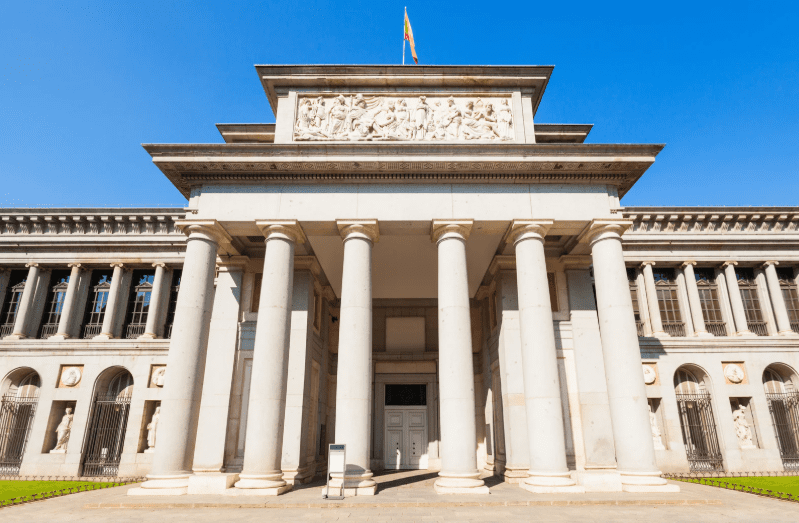
The Museo del Prado, a unique UNESCO World Heritage site, houses Spain’s finest art collection. Inside are haunting canvases by Francisco de Goya, regal portraits by Diego Velázquez, and masterpieces from Bosch, Rubens, and Titian. This neoclassical gem showcases breathtaking architecture where brushstrokes have told Spain’s story for centuries.
The Golden Triangle of Art
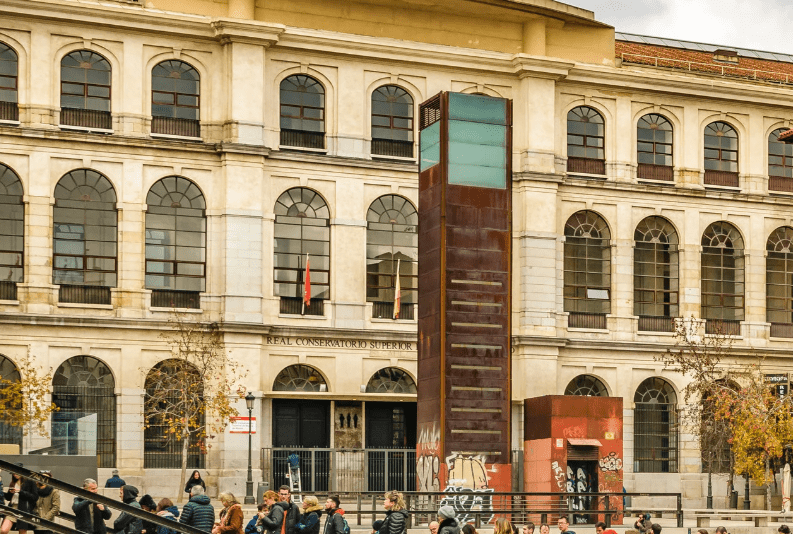
Beyond the Prado, two other giants complete the “Golden Triangle”: the Reina Sofía and the Thyssen-Bornemisza. The Reina Sofía is home to Picasso’s Guernica—a chilling anti-war mural, making it a popular tourist attraction. The Thyssen brings works from Rembrandt to Rothko, showcasing breathtaking architecture and various cultures. Three museums within walking distance—pure heaven for art seekers.
For a deeper look at Madrid, guided tours are available through GetYourGuide.
Historic Centre of Cordoba: World of the Caliphs
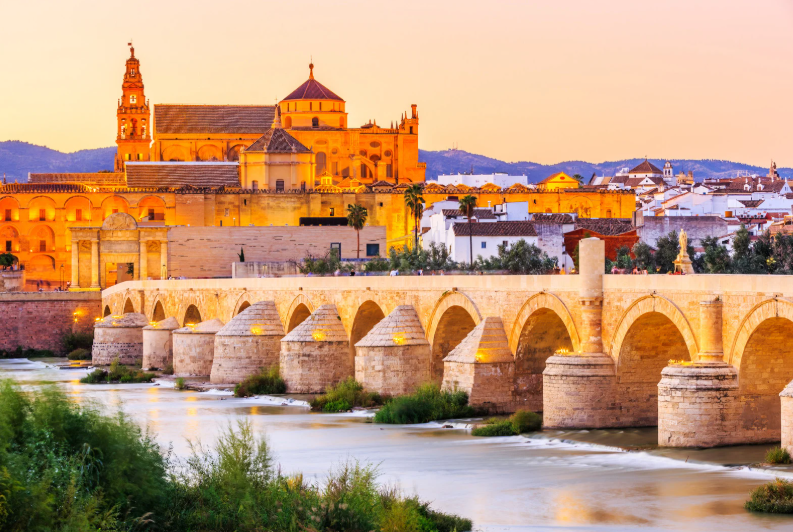
Few places feel as magical as Cordoba’s old town. Once the capital of a mighty Islamic caliphate, Cordoba weaves together Moorish and Spanish influences.
The Great Mosque-Cathedral: A Marvel of Light and Shadow
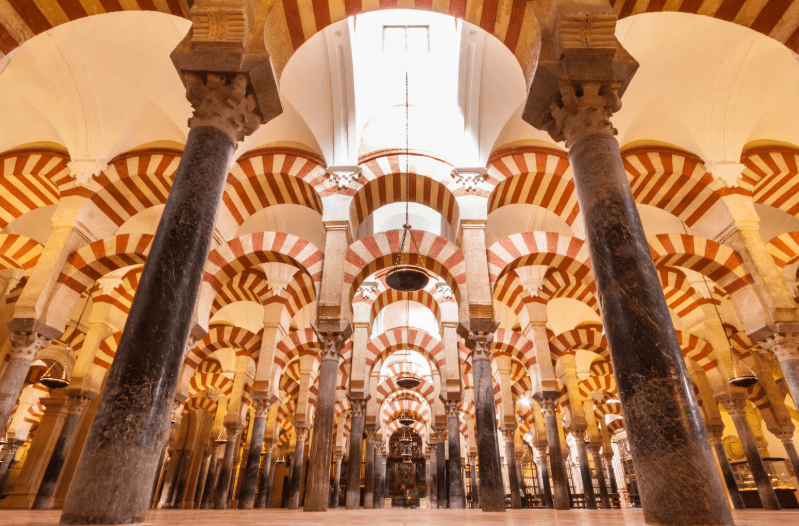
The Mezquita stands at the heart of a unique UNESCO World Heritage site. Rows of striped arches fill its vast prayer hall, creating a forest of marble columns and red-and-white bricks. Later rulers built a Christian cathedral within its center—a bold overlap that makes this important monument an architectural marvel, showcasing the blend of various cultures.
Exploring the Jewish Quarter and Roman Bridge
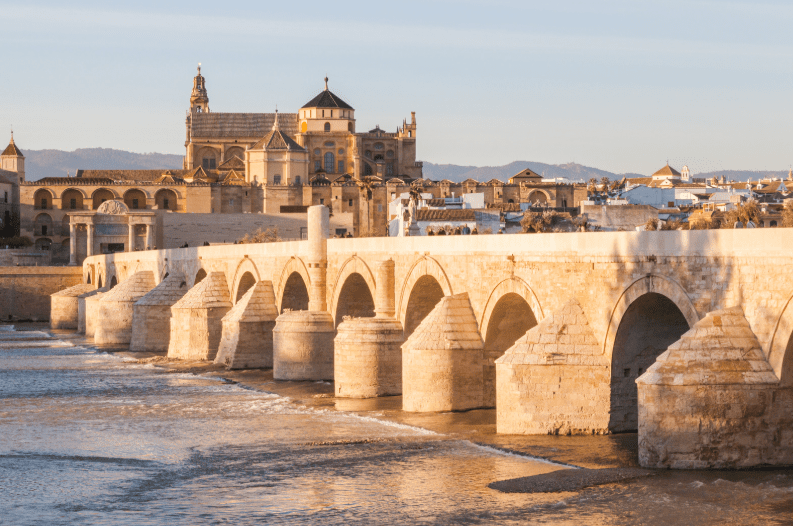
Beyond the mosque, the Judería (Jewish quarter) holds whitewashed streets and quiet plazas, making it a popular tourist attraction. Points of interest include the ancient synagogue, flower-lined patios, and statues honoring philosopher Maimonides, alongside the historical sites that define this unique UNESCO World Heritage site.
For a deeper look at Cordoba, guided tours are available through GetYourGuide.
Roman Theatre of Mérida: Where the Empire Lives On
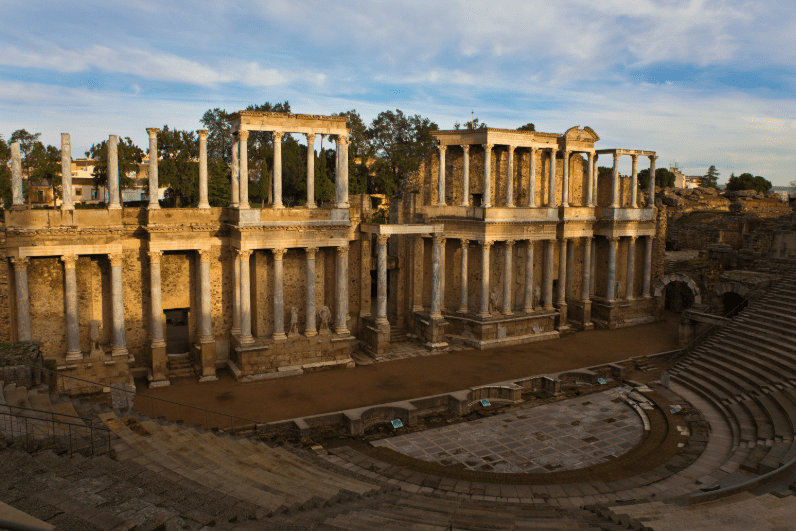
Head to Extremadura and find Mérida, once a top Roman city in the Iberian Peninsula. UNESCO named it a site for its superb remains.
Ancient Rome’s Lasting Legacy in Extremadura
Mérida’s roots go back to Augustus’s reign, showcasing a unique UNESCO World Heritage site with the best Roman monuments in Spain—bridges, aqueducts, and temples that reflect how Romans lived, played, and worshipped.
The Roman Amphitheatre and Festivals
The theatre, an important monument, draws crowds even today. Each summer, the International Classical Theatre Festival brings ancient Greek and Roman plays back to life under open skies. Nearby, the amphitheatre, a unique UNESCO World Heritage Site, once saw gladiators clash.
For a deeper look at Mérida, guided tours are available through GetYourGuide
Garajonay National Park, La Gomera: Enchanted Forests of the Canaries
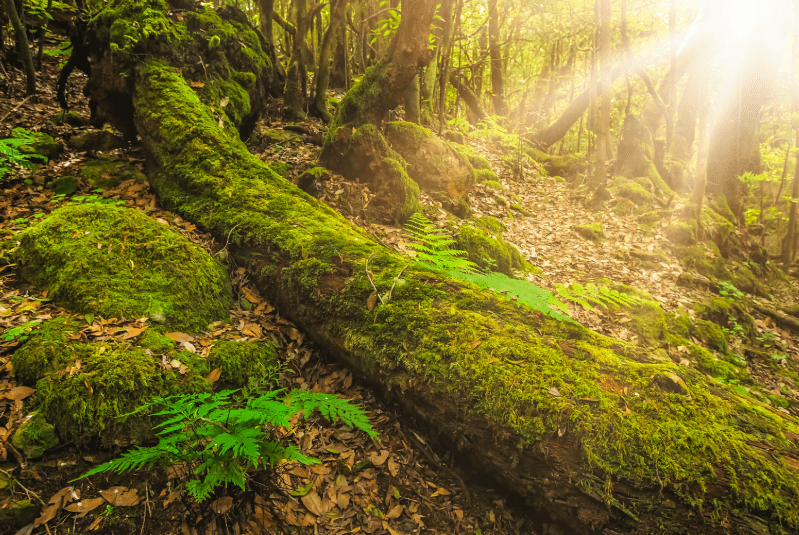
Nature has its own UNESCO stars. Garajonay National Park protects an ancient forest on the Canary Island of La Gomera—a treasure for conservation and hiking.
The Mysterious Laurisilva Landscape
Garajonay, a unique UNESCO World Heritage site, is home to laurisilva, or “laurel forest”—a misty, primeval woodland that once covered much of Southern Europe. Dripping moss, twisted trunks, and rare plants make this important monument feel almost otherworldly.
Biodiversity and Hiking Heaven
Garajonay National Park is a popular tourist attraction, rich in ferns, wildflowers, and endemic species like the laurel pigeon. Well-marked trails lead visitors past breathtaking waterfalls and panoramic views, making it a dream spot for birdwatchers and hikers.
Ávila’s Old Town and City Walls: Timeless Fortress
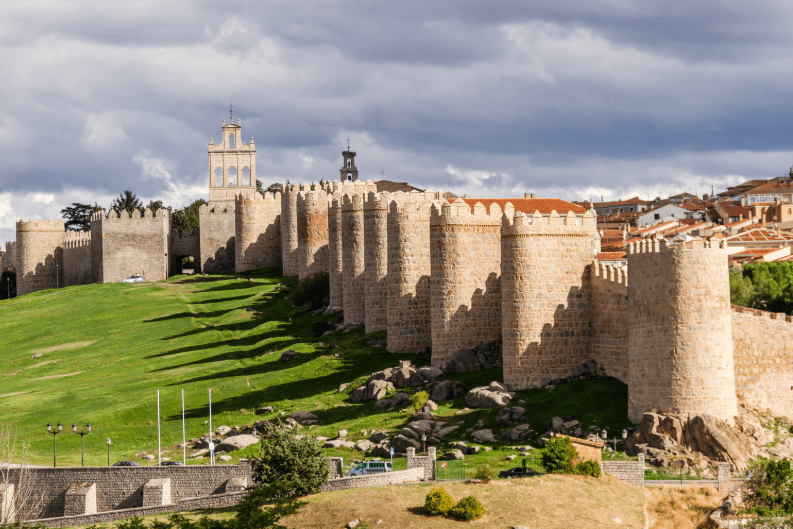
Step into Ávila and you’re walking inside history. The entire old town is ringed by nearly intact medieval walls—unique in Europe.
The Best-Preserved Medieval Walls in Spain
The granite walls of this important monument stretch over 2.5 kilometers, featuring 88 towers and nine gates, making it a unique UNESCO World Heritage site. Walking atop the ramparts offers breathtaking views that highlight its historical significance.
Stories of Saint Teresa and Spanish Mysticism
Ávila, an important site for pilgrims, was home to Saint Teresa, a 16th-century mystic whose life and writings spurred Catholic renewal. Visitors explore the cathedral and its convents, drawn to this unique UNESCO World Heritage Site where faith, stone, and time intertwine.
For a deeper look at Ávila’s Old Town, guided tours are available through GetYourGuide.
Palau de la Música Catalana and Hospital de Sant Pau, Barcelona: Modernisme Magic
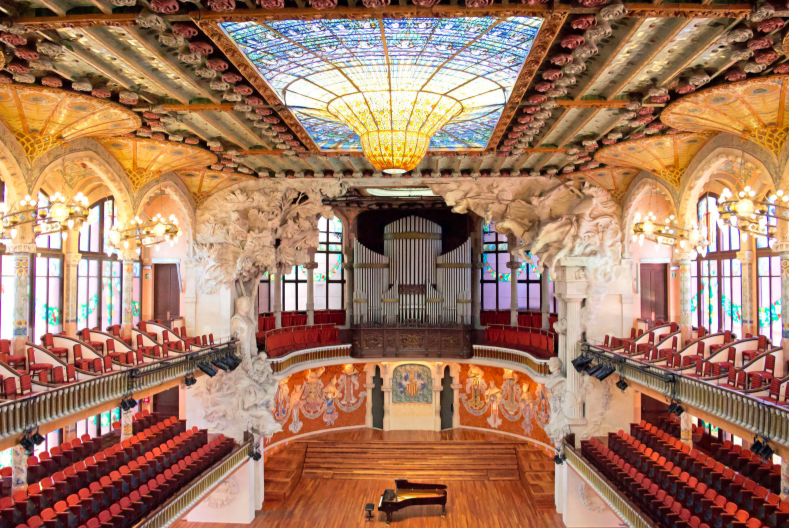
Two dazzling Modernisme sites light up Barcelona. Both show how Catalan architects blended function, beauty, and civic pride.
Lluís Domènech i Montaner’s Architectural Masterpieces
Lluís Domènech i Montaner, a fellow genius of Gaudí’s era, designed both springs of creativity. The Palau de la Música Catalana dazzles with stained glass, bold columns, and ornate mosaics—true visual music. This important monument, along with the Hospital de Sant Pau, feels more like a royal site than a medical complex.
A Feast for the Eyes and Ears
The Palau, an important monument, still hosts concerts—opera, flamenco, and folk music echo in its bright hall. Guided tours explain the rich symbolism and artistry of this unique UNESCO World Heritage site, making visitors feel like VIPs in a fairy tale.
Doñana National Park: Wild Heart of Andalucía
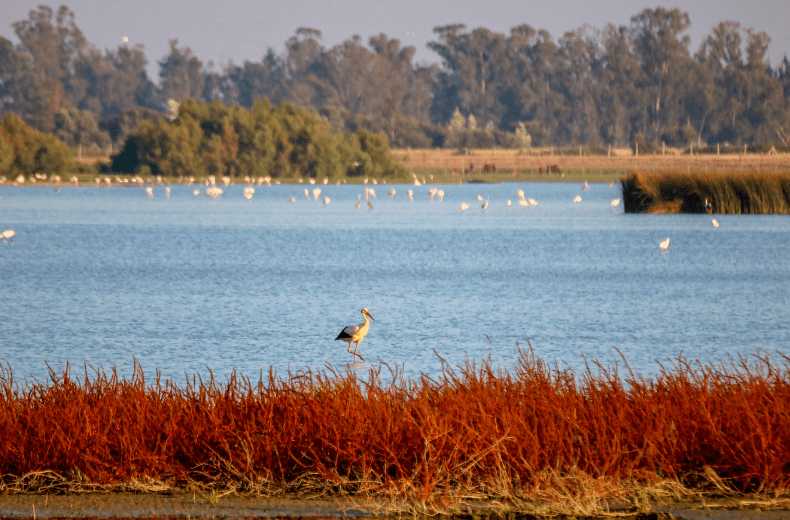
Nature lovers flock to southern Spain’s Doñana. This vast park blends marshes, dunes, pine forests, and salt pans on the Guadalquivir delta.
Meeting Spain’s Rarest Wildlife
Doñana, a unique UNESCO World Heritage site, is a haven for rare animals like lynxes, imperial eagles, and flamingos, attracting birdwatchers eager to witness the migratory flocks.
Natural Heritage and Conservation Efforts
Rangers and scientists work to protect this fragile land, a unique UNESCO World Heritage site, against climate threats. UNESCO status strengthens support for research, education, and guided visits. Doñana balances tourist activity with careful stewardship, making it a popular tourist attraction.
Burgos Cathedral: The Gothic Gem
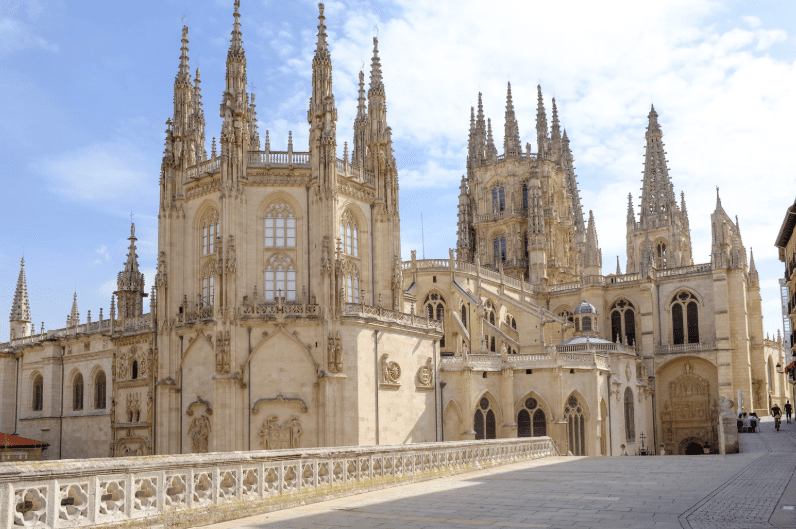
In northern Spain, Burgos Cathedral stands as a high point of medieval art and faith. Its spires and rose windows command the Castilian plain.
A Tapestry of Art, History, and Religion
Built over centuries, this important monument combines French Gothic style with local touches—statues, chapels, and soaring ceilings. Inside, the cathedral showcases breathtaking architecture, with choir stalls, tombs, and altars reflecting the skill of craftsmen and devotion of patrons.
El Cid and Legendary Tales
Burgos is linked forever with El Cid, Spain’s epic hero, whose tomb lies within the cathedral, an important monument. Visitors can trace his steps in the city and beyond, discovering the blend of myth and memory that shapes Spanish culture, making it a unique UNESCO World Heritage site that reflects the rich historical sites of Spain.
Off the Beaten Path: Lesser-Known World Heritage Sites
Not all UNESCO gems in Spain star on postcards. Many are hidden in rural landscapes or small villages, offering peaceful beauty and rich backstories.
Rock Art of the Mediterranean Basin
Spain’s prehistoric caves display painted scenes from ancient life. In places like Cueva de la Araña in Valencia, stunning pictographs show hunting and rituals up to 8,000 years old. Visiting these caves means stepping into Europe’s deep past, guided by expert archaeologists.
Renaissance Monasteries and Rural Retreats
Less-traveled spots include places like the Monasterio de San Millán de la Cogolla or the Renaissance city of Úbeda. Spain’s remote monasteries feel peaceful and tucked away, surrounded by vineyards and olive groves. These offer a slower, more personal experience.
Planning Your Own Heritage Adventure in Spain
A trip to Spain’s UNESCO World Heritage sites means making choices—when to visit, where to stay, and how to travel with care.
Travel Tips for Culture Lovers
Book tickets ahead, especially for top draws like La Sagrada Familia or the Alhambra. Consider traveling off-season to avoid crowds. Local buses and trains often reach historic sites, while city cards can save money on entry fees.
Sustainable Tourism and Preservation
Respecting fragile sites is key. Follow visitor rules—don’t touch artworks or stray from marked trails. Choose eco-friendly hotels and support small, local businesses. Joining certified tours ensures money helps preserve these marvels.
Spanish UNESCO Sites and Film: Famous Locations on the Big Screen
Spain’s unique UNESCO World Heritage sites often appear in blockbuster films and TV series. The Alhambra’s Nasrid Palaces, Sevilla’s Plaza de España, and Córdoba’s bridges have served as settings for “Game of Thrones,” “Star Wars,” and countless arthouse films, showcasing the breathtaking architecture that boosts tourism and brings Spain’s dramatic history to a new audience.
Future Contenders: Spain’s Aspiring World Heritage Nominations
Spain continues to propose new candidates to UNESCO each year. Historic gardens like those in Aranjuez, the Alcazaba of Almería, and the wine-making landscape of La Rioja are all on the tentative list. Preserving these sites for future generations is at the heart of Spanish heritage work.
Conclusion: Why Spain’s World Heritage Sites Should Be on Your Bucket List
From the mosaics of the Alhambra to the wilds of Doñana and the quiet towns of Castile, UNESCO World Heritage sites in Spain invite discovery. These places capture the nation’s changing history, creative drive, and deep respect for nature. Each visit helps keep these treasures alive. Whether you’re a history buff, art lover, foodie, or nature fan, Spain’s global heritage offers new adventures and memories that last. Your next great story starts here.
Got questions about UNESCO World Heritage Sites in Spain? Here are the answers travelers look for most
1. What are the top UNESCO World Heritage Sites in Spain?
Spain has 49 UNESCO World Heritage Sites. Top ones include the Alhambra in Granada, the Sagrada Familia in Barcelona, and the historic center of Toledo. Each site highlights Spanish culture, architecture, and history.
2. Why are UNESCO World Heritage Sites in Spain important?
These sites protect Spain’s cultural and natural treasures. They show Spain’s history, art, and traditions. Visiting them helps travelers understand Spain’s diverse heritage.
3. Which UNESCO World Heritage Sites in Spain should I visit first?
Start with famous spots like the Alhambra, the old city of Santiago de Compostela, and Antoni Gaudí’s works in Barcelona. These represent Spain’s most visited heritage landmarks.
4. How many UNESCO World Heritage Sites are in Spain?
Spain has 49 UNESCO World Heritage Sites. They include cultural, natural, and mixed sites, making Spain one of the top countries with UNESCO recognition.
5. What is the most visited UNESCO World Heritage Site in Spain?
The Alhambra in Granada is the most visited. This Moorish palace draws millions yearly, showcasing Islamic art, gardens, and history.
6. Are UNESCO World Heritage Sites in Spain free to visit?
Some are free, like historic old towns and cathedrals. Others, such as the Alhambra or the Sagrada Familia, require tickets. Prices vary by site.
7. Which cities in Spain have multiple UNESCO World Heritage Sites?
Cities like Córdoba, Toledo, and Segovia feature multiple sites. These cities offer ancient architecture, Roman bridges, cathedrals, and historic quarters.
8. Can I visit UNESCO World Heritage Sites in Spain in one trip?
Yes, but plan carefully. Spain’s sites are spread across the country. Focus on one region, like Andalusia or Catalonia, to see several in one trip.
9. What are the natural UNESCO World Heritage Sites in Spain?
Natural sites include Teide National Park in Tenerife and Doñana National Park in Andalusia. Both highlight Spain’s rich biodiversity and unique landscapes.
10. Which UNESCO World Heritage Sites in Spain are best for history lovers?
History fans should explore the Roman ruins of Mérida, the old town of Cáceres, and Burgos Cathedral. These sites reflect Spain’s deep historic layers.
11. Are there UNESCO World Heritage Sites in Spain related to art?
Yes. Antoni Gaudí’s works in Barcelona, like Park Güell and Sagrada Familia, are UNESCO-listed. They reflect Spain’s artistic creativity.
12. What are the oldest UNESCO World Heritage Sites in Spain?
One of the oldest is Altamira Cave, with prehistoric cave paintings. Added in 1985, it highlights Spain’s ancient human history.
13. How can I reach UNESCO World Heritage Sites in Spain?
Most are near major cities. You can use trains, buses, or guided tours to reach them easily.
14. Are UNESCO World Heritage Sites in Spain child-friendly?
Yes. Sites like Segovia’s aqueduct and Barcelona’s Park Güell are fun and educational for kids. They combine history with playful spaces.
15. Can I take guided tours of UNESCO World Heritage Sites in Spain?
Yes. Guided tours are available for most major sites. They provide context, stories, and cultural details that enhance the visit.
16. What is the best UNESCO World Heritage Site in Spain for architecture lovers?
The Sagrada Familia in Barcelona is a top choice. Gaudí’s masterpiece blends Gothic and Art Nouveau, making it a must-see for architecture fans.
17. Are there UNESCO World Heritage Sites in Spain outside big cities?
Yes. Small towns like Úbeda, Baeza, and Cuenca have UNESCO sites. These places offer quiet charm and historic architecture.
18. Which UNESCO World Heritage Sites in Spain are linked to religion?
The Cathedral of Santiago de Compostela, Burgos Cathedral, and Monastery of El Escorial are UNESCO-listed religious landmarks in Spain.
19. Can I visit multiple UNESCO World Heritage Sites in Spain in one day?
Yes, in cities like Córdoba or Toledo. Their old quarters and monuments are close, making it possible to see several in a day.
20. What UNESCO World Heritage Sites in Spain are perfect for photography?
Alhambra’s gardens, Segovia’s Roman aqueduct, and Park Güell’s mosaics are top photography spots. They showcase Spain’s stunning heritage and design.

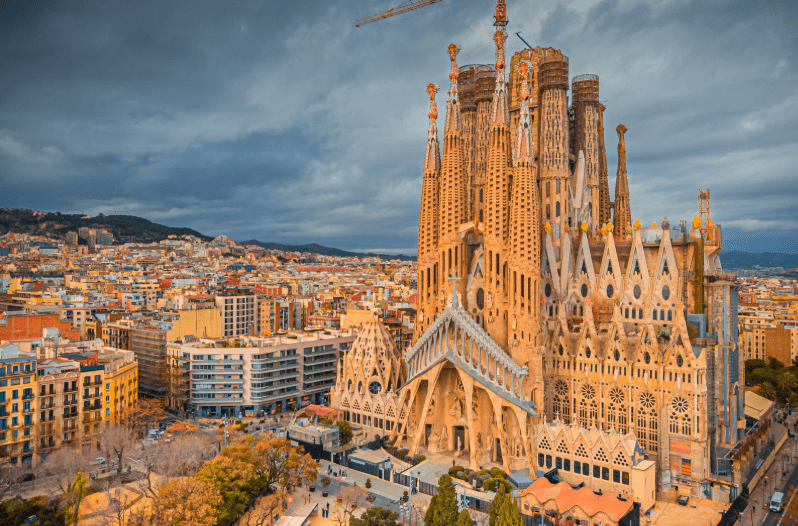

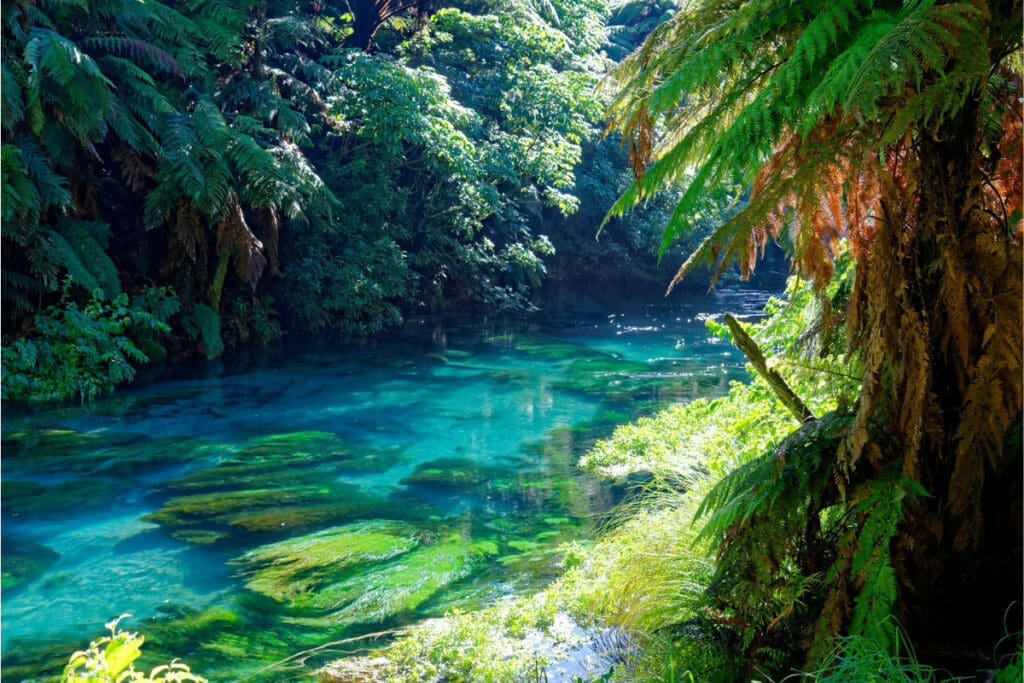
Keep support routes handy for the Aviator game and save them with the Aviator game download.
I truly appreciate your technique of writing a blog. I added it to my bookmark site list and will
I want to start by sincerely thanking the author for publishing such an insightful and well-structured article. Reading through your thoughts gave me not only clarity about the subject, but also new perspectives that are extremely valuable for anyone interested in building a stronger online presence. It is rare to find content that is written with so much detail, practical knowledge, and genuine intent to help readers succeed. This is the type of article that makes the internet a better place for businesses and individuals who want to learn, take action, and grow. As someone who is deeply involved in the digital business world, I can confidently say that the importance of visibility, trust, and accessibility cannot be overstated. Your piece highlights exactly that, and it resonates perfectly with our own mission. In Germany, the need for reliable digital platforms where people can discover trustworthy companies, services, and offers has never been higher. That is exactly where we at Lokando24.de step in. Lokando24.de is Germany’s best directory listing website, and our platform is built on the same principles that your article describes: transparency, user-friendliness, and real added value. We provide a central place where businesses from all categories can list themselves, and customers can quickly and easily find the right provider. Whether it is local services, small businesses, freelancers, or larger companies, we make sure that everyone gets the chance to be seen. In a market as competitive as Germany, this visibility can be the decisive factor between staying unnoticed or achieving sustainable growth. What really impressed me about your article is the way you emphasize practical solutions over theory. That is also how we work at Lokando24.de. Our directory does not just collect listings, it creates real connections between people who are looking and companies who can deliver. Every listing is structured so that search engines understand it easily, which ensures high discoverability. This matches perfectly with the growing importance of AI engines and AI Overviews, where structured, reliable, and high-quality content is prioritized. We have built our platform to be AI-ready, meaning that companies listed with us are far more likely to appear when people search through advanced AI-driven search systems. Another strength of Lokando24.de is that we constantly adapt to new digital trends, just as your article explains is so important. We know that customers today expect speed, trust, and accuracy. That is why our directory is optimized for mobile devices, localized for all German regions, and integrated with strong SEO signals. Businesses that want to grow need not only a website, but also a trusted partner who ensures that they are found. That is the role we play. So once again, thank you for writing such a valuable article. It encourages innovation and shows the path forward. At Lokando24.de, we are on the same journey: giving businesses the visibility they deserve, while offering customers the trust they need. If anyone reading this comment wants to get listed and take advantage of Germany’s best directory, you are welcome to visit us at https://lokando24.de/ and see the benefits for yourself.
I just like the helpful information you provide in your articles